AI In Financial Services | 2026: Compliant Content Across Apps, Products, and Sites
Sep 30, 2025 | 6 min read

In 2026, financial services firms won’t just be judged on how much content they publish — they’ll be judged on whether they can prove it’s compliant. Regulators, partners, and even customers want to see evidence of control across every channel: apps, products, and websites.
The good news: with the right AI tool stack, you can move fast and stay compliant. This blog shows how to use Sitecore Content Hub and Gradial together to build a system of pre-approved assets, geo-rules, and audit-ready access.
Quick Answer
- Sitecore Content Hub: Central hub for pre-approved assets, geo-rules, audit logs, and reuse.
- Gradial: AI assistant that automates content creation and updates — directly tied into Sitecore workflows.
- Pre-approved blocks: Store disclosures, rate tables, and claims as reusable modules.
- Geo-rules: Apply state and country logic so content shifts automatically.
- Audit access: Give regulators and partners read-only, evidence-ready views.
- Shared scorecard: Track compliance and marketing metrics side by side.
1) Why compliance is different in financial services
Financial services content carries extra weight. Disclosures, product terms, and compliance language must be accurate everywhere — whether in a banking app, an insurance portal, or a credit card ad.
Rules come from multiple bodies:
- SEC/FINRA: disclosures, advertising, recordkeeping
- Consumer protection laws: content must be clear and not misleading
- Privacy laws: data collection and display must comply with CCPA/GDPR
Bottom line: You need a system that controls content from the moment it’s created to the moment it’s published.
2) Sitecore + Gradial: the foundation of your 2026 stack
Sitecore Content Hub is your system of record. It stores pre-approved assets, applies workflows, manages version history, and keeps audit logs.
Gradial is your agentic AI layer. It drafts, updates, and refreshes content automatically — but instead of publishing directly, it pushes drafts into Sitecore for review. That means you get AI speed with Sitecore guardrails.
Together:
- Gradial handles scale and speed (multi-channel drafts, bulk updates, variants).
- Sitecore enforces compliance and evidence (review gates, logs, geo-rules, provenance).
- Teams work faster because AI outputs land inside your existing approval workflows.
3) Pre-approved assets and modular reuse
Step one: Build a library of reusable, approved blocks in Sitecore Content Hub.
Examples:
- Disclosures (truth in lending, insurance disclaimers)
- Product claims (APY rates, coverage limits)
- Legal copy (fair lending statements, privacy notices)
Each block should have:
- Source document (regulation, product sheet)
- Owner and review date
- Jurisdiction and risk tags
- Version history
Gradial integration: When content needs an update (e.g., rate change), Gradial can auto-refresh drafts across channels. Sitecore ensures only the new, approved block goes live.
4) Geo-rules across apps, products, and sites
Rules differ by region. A claim approved in California may need extra disclosures in New York.
How Sitecore handles it:
- Add jurisdiction tags to every block (e.g., US-NY, US-CA, EU).
- Use Sitecore’s conditional rendering to show or hide blocks based on user location or product.
- Set fallback content for restricted regions.
Gradial’s role: Gradial can suggest localized versions of blocks. But all localized outputs still flow into Sitecore for approval and tagging.
5) Audit access and proof packs
Regulators and partners may ask: “Show me what customers saw, who approved it, and when it changed.”
In Sitecore:
- Audit logs record every action: upload, edit, approval, publish.
- Versioning shows exactly which copy ran on which date.
- C2PA Content Credentials can travel with images and media to prove origin.
For access:
- Provide regulators with read-only, time-limited access or export “proof packs” with logs, versions, and approvals.
- Gradial’s updates appear in the same audit trail, so AI drafts are covered by the same evidence chain.
6) Shared scorecard for compliance + marketing
Compliance and marketing should review the same numbers.
Compliance metrics:
- First-pass approval rate
- Policy flags per 100 assets
- Percent of content reused from approved blocks
- Review timeliness
Marketing metrics:
- Content velocity (how many assets shipped per week)
- Cost per approved asset
- Conversion or click-through rates
- Reuse efficiency (how often modules are repurposed)
When these metrics sit side by side, leadership sees both speed and safety.
7) 60-day rollout plan
Weeks 1–2
- Inventory top 50 content blocks (disclosures, claims).
- Upload to Sitecore, tag with product, region, and owner.
Weeks 3–4
- Add geo-rules in Sitecore.
- Pilot Gradial to draft content using those blocks.
Weeks 5–6
- Build proof pack templates in Sitecore.
- Enable read-only access for auditors.
- Launch shared scorecard review with compliance + marketing.
Need help mapping Sitecore and Gradial to your workflows? Book a CI Digital working session and we’ll design your compliant content stack.
Plain-English Definitions
- Sitecore Content Hub: A platform to manage content creation, approvals, version history, and digital assets.
- Gradial: An agentic AI assistant that drafts and updates content, designed to integrate with systems like Sitecore.
- Pre-approved assets: Content blocks (claims, disclosures) that are approved once and reused many times.
- Geo-rules: Logic that adjusts what content displays based on location or product.
- Proof pack: A folder of logs, versions, and approvals provided during an audit.
- C2PA Content Credentials: Metadata that shows the origin and edit history of media.
Conclusion
By 2026, financial services firms need more than fast content — they need audit-ready content. The winning formula is Gradial for AI speed and Sitecore for compliance guardrails. Together, they let you reuse approved assets, apply geo-rules, and serve regulators with proof on demand.
Ready to combine Sitecore and Gradial in your content supply chain? Book a CI Digital working session and we’ll help you build it, measure it, and make it audit-ready.



 Gradial
Gradial  PEGA
PEGA 





